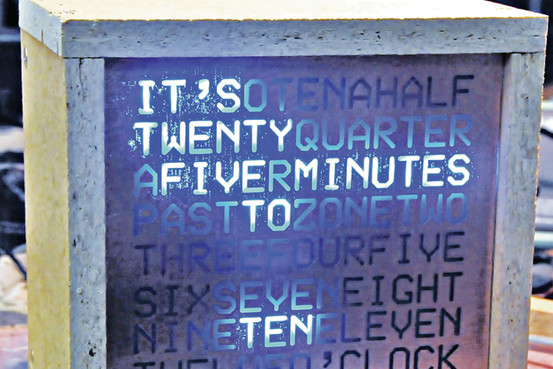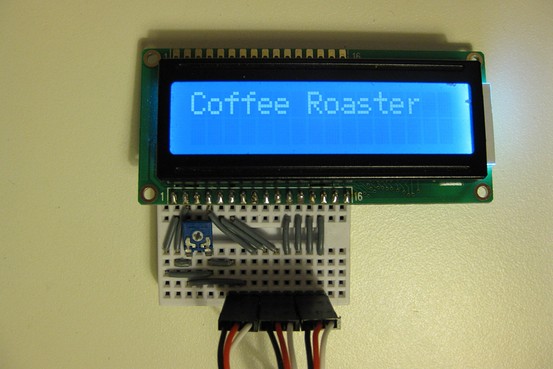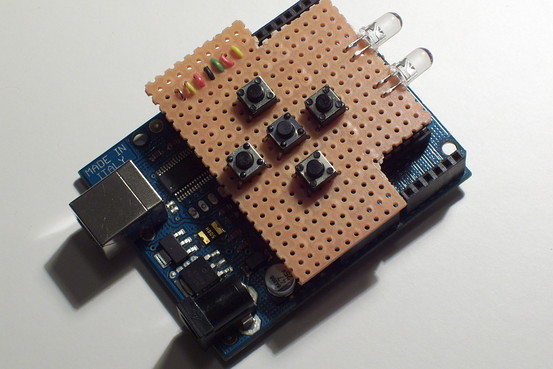
A wall clock that runs on Arduino hardware.
Instructables
Taking an Open-Source Approach to Hardware
By Justin LahartNovember 27, 2009
The palm-sized Arduino serves as an electronic brain running everything from high schoolers' robots to high-end art installations. But perhaps the oddest thing about the device is the business model behind it.

A wall clock that runs on Arduino hardware.
Instructables
Plans for the Arduino, a simple microcontroller board, are available online, and anybody may legally use them to build and sell knockoffs.
The Arduino represents an early entrant in the emerging open-source hardware movement, which like Linux and other open-source software projects is driven by the belief that allowing duplication is a better way to spur innovation than keeping designs under lock and key. Its success suggests that the open-source model could provide a new way for manufacturers to develop and improve upon products.
The main producer of the Arduino is Smart Projects Snc, based in the tiny town of Scarmagno, Italy. This year, the two-person firm is on track to sell at least 60,000 of the microcontrollers, which retail for at least $30 a piece, up from 34,000 last year. Owner Gianluca Martino, an electrical engineer, has had to contract out much of the production to keep up with growth.
It's a peculiar predicament, since the Arduino's designs are on the Internet for anyone to download and use.While there are clones on the market, the microcontrollers that Mr. Martino produces, with the map of Italy printed on the back of it, are by far the most popular.

A Silly String shooter inside a pumpkin.
Instructables
"What's interesting in this kind of open-source project is the feeling of confidence the consumer has," he says, since people can look up the designs and tailor the Arduino to their needs.
Microcontrollers are ubiquitous in everyday life. They are used as tiny, onboard computers that do everything from tell when a washing machine is out of balance to deploy car airbags in a collision.
The Arduino got its start at the Interaction Design Institute in the city of Ivrea, Italy, in 2005. Professor Massimo Banzi was looking for a way to make it easier for the design students there to work with technology. He discussed his problem with David Cuartielles, an engineer visiting from Malmö University in Sweden, and they decided to make a microcontroller that designers could incorporate into their work.
Engineers use programmable microcontrollers for prototyping new products, but the two professors viewed these as too difficult to work with, and too expensive, for their design students.
They enlisted two students with backgrounds in computer programming to write software for the device and asked Mr. Martino to build the first 200 microcontrollers. They named it Arduino—after a local bar. Knowing that the Interaction Design Institute would close down the following year, they made it open source.

An automated coffee roaster.
Instructables
"We wanted to make sure that whatever work we did on the project would survive the fate of the school," explains Mr. Banzi.
Open-source software, which can be freely downloaded, used or modified by anyone, has been around since the 1980s. It gathered momentum with the advent of the Internet in the 1990s, which allowed open-source programmers to easily collaborate on projects such as Linux or the Apache server software that runs many Web sites.
Open-source hardware applies the same idea to physical things. There are a number of recent open-source hardware initiatives, including the Chumby, a clock-radio sized device that runs software "widgets" to display the weather or stream music, and Bug, a system of snap-together modules that can be used to make a variety of computing devices.
So far, the Arduino has been the most successful. In the space of an hour, a layman can make it blink an LED, run a motor or send a temperature reading to a computer monitor. With a little practice, people have been able to do much more.
Using Arduino hardware, tinkerers have recently created everything from a word clock to a radio-controlled lawnmower for a contest hosted by the Web site Instructables.com.

A remote control for Apple products.
Instructables
In addition to the microcontrollers produced by Mr. Martino's firm, there are a handful of other Arduino makers that pay royalties in order to carry the Arduino name. The development team pumps most of that cash back into the project, splitting what remains at the end of year as partial compensation for the time they spend on it. ("It's like a Christmas present," says Mr. Banzi.)
Leah Buechley, a professor at the Massachusetts Institute of Technology, developed a stripped-down, washable version of the Arduino called the LilyPad that can be sewn into fabric to create clothing with flashing LEDs and other effects. Manufactured by Boulder-based electronics retailer SparkFun Inc., about 4,000 of the $21 LilyPads have sold since 2007. SparkFun also sells components, such as conductive thread, to go with it.
Because it's built on the Arduino's design, the LilyPad must also be open source. That means that anybody could knock it off, but Ms. Buechley says a clone could never compete. "I don't really care if someone can copy this thing, because a month from now I'm going to be making something different," she says. "It's going to be archaic by the time they catch up."
Copyright 2009